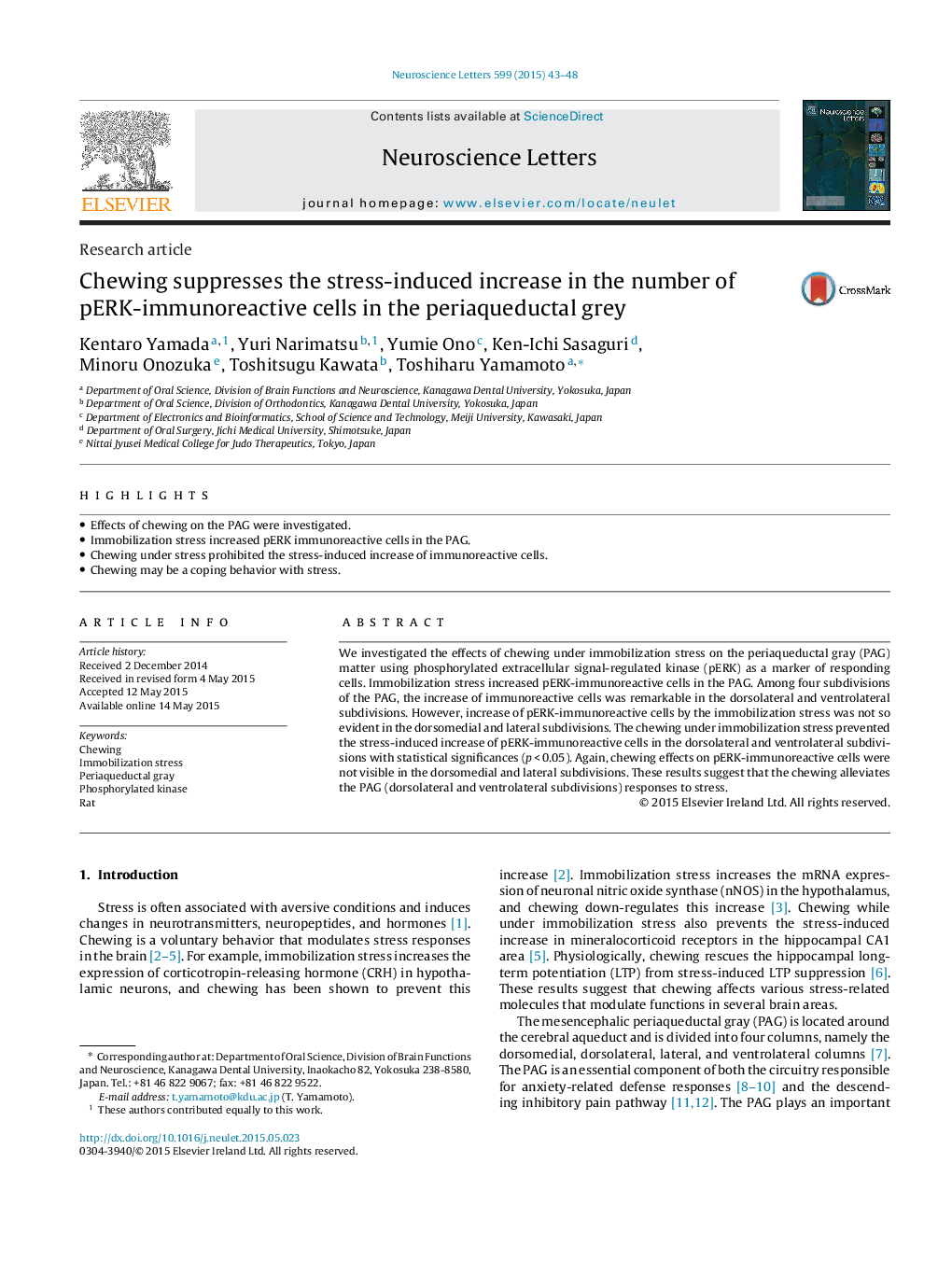| Article ID | Journal | Published Year | Pages | File Type |
|---|---|---|---|---|
| 4343428 | Neuroscience Letters | 2015 | 6 Pages |
•Effects of chewing on the PAG were investigated.•Immobilization stress increased pERK immunoreactive cells in the PAG.•Chewing under stress prohibited the stress-induced increase of immunoreactive cells.•Chewing may be a coping behavior with stress.
We investigated the effects of chewing under immobilization stress on the periaqueductal gray (PAG) matter using phosphorylated extracellular signal-regulated kinase (pERK) as a marker of responding cells. Immobilization stress increased pERK-immunoreactive cells in the PAG. Among four subdivisions of the PAG, the increase of immunoreactive cells was remarkable in the dorsolateral and ventrolateral subdivisions. However, increase of pERK-immunoreactive cells by the immobilization stress was not so evident in the dorsomedial and lateral subdivisions. The chewing under immobilization stress prevented the stress-induced increase of pERK-immunoreactive cells in the dorsolateral and ventrolateral subdivisions with statistical significances (p < 0.05). Again, chewing effects on pERK-immunoreactive cells were not visible in the dorsomedial and lateral subdivisions. These results suggest that the chewing alleviates the PAG (dorsolateral and ventrolateral subdivisions) responses to stress.
